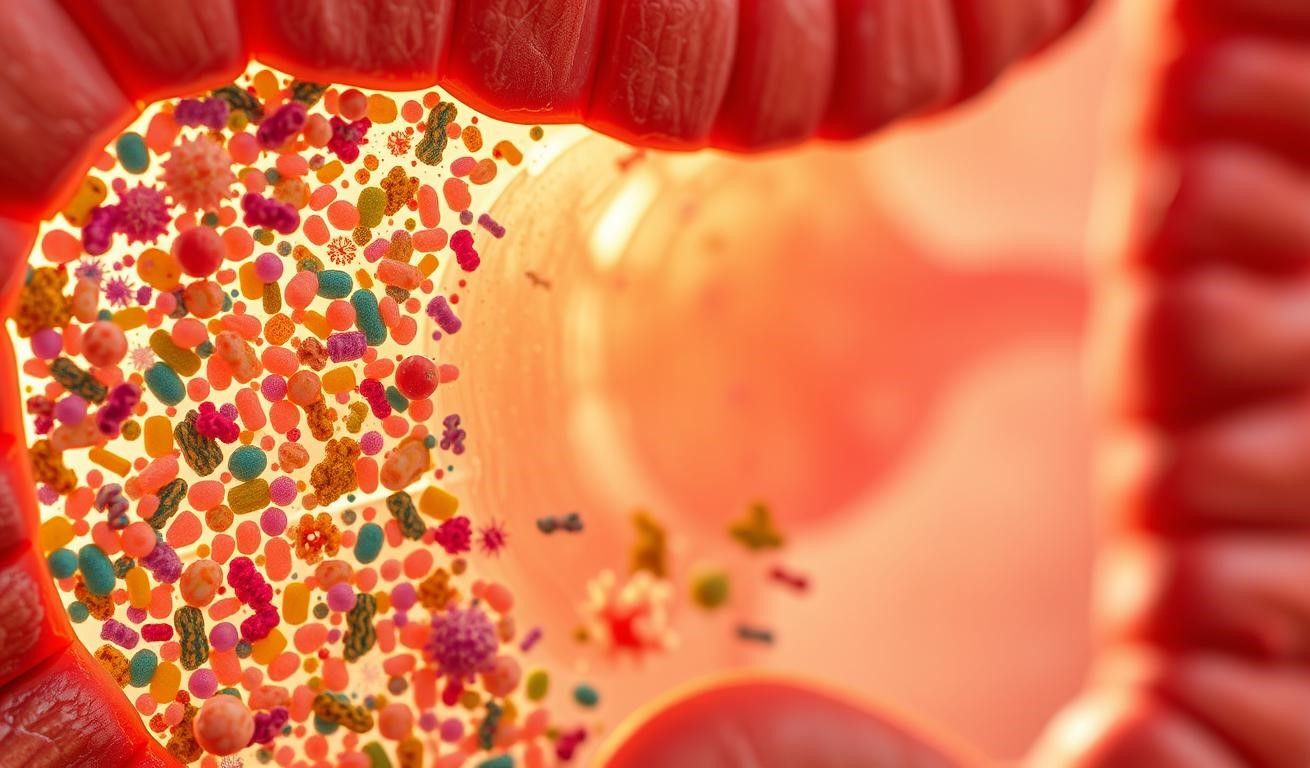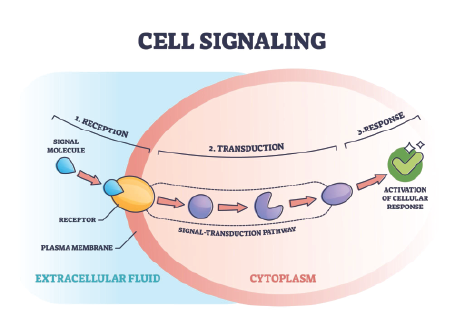Beyond the Basics: Understanding Comprehensive Stool Testing for Optimal Digestive Health
Your gut holds vital clues to your overall
digestive health, immunity, and energy. Modern comprehensive stool profiles go far beyond simple screens. They measure digestion and absorption markers, inflammation signals, and provide deep insights into your
gut flora—the community of microbes that live in your intestines.

At Master Survivor University, Dr. Michael Rudolph Maxon (Dr. Johnny) leads a team that turns lab findings into clear care steps, often utilizing the principles of the Total Gut Restoration (3Rs) approach. Advanced methods like qPCR, MALDI-TOF culture, and optional whole-genome sequencing reveal hard-to-find organisms and functional pathways, leading to measurable improvements in microbiome health.
This short guide shows what a focused evaluation covers, why those markers matter for symptoms like bloating or reflux, and how results translate into targeted nutrition and therapies. For questions or to get started, call
972-825-7912. You'll leave with practical insight, not jargon, so you and your practitioner can act with confidence toward better
digestive health.
Key Takeaways
- Modern analysis links digestion, inflammation, and microbiome health to symptoms.
- Markers like pancreatic elastase-1 and calprotectin point to actionable issues for improving digestive health.
- Advanced methods find parasites, bacteria, and functional pathways crucial for understanding your gut flora.
- Dr. Johnny and Master Survivor University translate results into clear plans for long-term gut restoration.
- Accurate collection and timing matter to get valid, useful results.
Comprehensive Stool Testing at The Master Survivor University: Expert-Led Care for Optimal Gut Restoration
Dr. Michael Rudolph Maxon (Dr. Johnny) leads a lab-focused program that turns advanced testing into clear, practical plans for each patient. Our approach pairs precise laboratory analysis with easy-to-follow recommendations so you know what to address first to achieve true gut restoration.
Profiles sort markers across digestion and absorption, inflammation and immunology, and the gut microbiome. Reports include antimicrobial sensitivities for both prescriptive and natural agents, plus optional whole-genome sequencing for deeper functional insight into your microbiome health.
Personalized treatment plans link your analysis and results to daily actions—diet, supplements, and habits. We prioritize clinically useful outcomes so you get targeted care without wasted steps or extra cost.
Ready to begin? Call 972-825-7912 to order and schedule your results review with Dr. Johnny.
What A Comprehensive Stool Test Measures: Digestion, Inflammation, And Your Gut Flora
Lab panels combine three core areas so your clinician can connect symptoms to causes related to your digestive health. They look at how well food breaks down, whether inflammation is present, and what the microbial community is doing.
Digestion and Absorption Markers
- Pancreatic elastase-1 evaluates exocrine pancreatic function and flags low enzyme output that can cause gas and bloating.
- Products of protein breakdown and fecal fat reveal whether proteins and fats are being digested and absorbed.
- Common culprits for impaired nutrient absorption and gut barrier compromise include: low gastric acid, maldigestion, food allergens, bacterial overgrowth (dysbiosis) within the gut flora, and pathogens/medications.
Inflammation and Immune Markers
- Calprotectin helps separate inflammatory bowel disease from IBS.
- Secretory IgA measures mucosal barrier health.
Microbiome Health Insights
Short-chain fatty acids show microbial metabolic effects that nourish colon cells. Reports map your gut flora across major genera and phyla and include dysbiosis scores. Dual methods—16S qPCR and culture—work together to improve detection of parasites and bacterial species. These insights are crucial for any plan focused on gut restoration.
Advanced Methods That Increase Detection and Clarity of Results
High-sensitivity molecular tools and culture work together to give clinicians clearer, faster answers about gut microbes and their effects.
PCR and qPCR assays target common protozoa and parasites like Blastocystis spp., Giardia, Cryptosporidium parvum/hominis, Cyclospora, Dientamoeba fragilis, and Entamoeba histolytica.
These methods raise detection rates for infectious causes, especially after travel or sudden GI illness.
Culture plus MALDI-TOF supports identification of live bacteria and fungal species. Cultures allow antimicrobial susceptibility profiling for prescriptive and natural agents so clinicians can choose the most effective options.
Metagenomic Whole-Genome Sequencing
Microbiomix sequencing surveys over 28,000 species (bacteria, fungi, protists, archaea) and maps functional pathways like LPS, TMA, histamine, vitamins, BCAAs, urease, GABA, and hydrogen sulfide. Results include diversity indices and evidence-based recommendations.
We combine methods because each adds value: PCR for high sensitivity, culture for live growth and sensitivities, and sequencing for ecosystem function. This layered approach yields actionable results faster and with less guesswork.
| Method | Primary Strength | Key Outputs |
|---|---|---|
| PCR / qPCR | High detection sensitivity | Blastocystis, Giardia, Cryptosporidium, Entamoeba, Cyclospora |
| Culture + MALDI-TOF | Live organism ID & susceptibilities | Bacterial fungal species ID; antimicrobial and natural agents sensitivity |
| Microbiomix WGS | Functional and ecosystem profiling | Species diversity, metabolic pathways, Shannon Index, functional risks |
- Functional insights explain why certain foods or supplements trigger reactions, guiding focused changes.
- Our laboratory partners emphasize analytical performance and clinically actionable reporting.
- If you’re unsure which methods fit your case, Dr. Johnny at Master Survivor University will help you weigh sensitivity, breadth, and cost. Call 972-825-7912.
"Expert selection and interpretation of advanced methods are provided by Dr. Johnny at The Master Survivor University."
Who Should Consider Gut Microbiome Analysis and Stool Test Interpretation?
Persistent belly symptoms often point to microbial shifts or inflammation that merit closer study to achieve true digestive health. If you have ongoing gas, bloating, diarrhea, constipation, reflux, cramps, or abdominal discomfort, a focused gut review can help find causes that routine care missed, paving the way for targeted gut restoration strategies.
Common GI Symptoms
- Gas, bloating, diarrhea, constipation, reflux, cramps: These issues often trace to imbalanced bacteria, parasites, or digestion problems.
- When IBS feels unresolved: Analysis can separate inflammation-driven disease from functional patterns and guide targeted therapy.
Systemic Links
- Allergies, eczema, and autoimmune conditions may reflect barrier or microbial issues that affect overall health.
- Mood changes, joint aches, weight shifts, and metabolic disease can relate to microbial metabolites and low-grade inflammation.
We help each patient pick the right collection approach, including when multi-day sampling improves detection for suspected parasites. Our goal is to turn lab insight into a clear plan for better gut and overall health.
"The Master Survivor University supports patients with chronic GI symptoms and systemic concerns through expert gut microbiome analysis." — Dr. Michael Rudolph Maxon
| Who to consider | Why it helps | Action |
|---|---|---|
| Persistent GI symptoms | Find bacterial or parasitic causes and functional issues related to the gut flora | Targeted analysis and tailored therapy |
| Unclear IBS vs IBD | Distinguish inflammation from functional patterns | Guides anti-inflammatory or microbiome health-directed care |
| Systemic issues (allergy, mood, weight) | Links between microbes, metabolites, and inflammation | Personalized plans to improve gut and overall digestive health |
Ready for guidance? Call
972-825-7912 to discuss options and next steps with The Master Survivor University team.
Comprehensive Stool Test: What Your Sample Report Reveals and How We Interpret It
Your sample report turns lab numbers into a short, practical plan that a patient can follow. Dr. Johnny interprets results with a focus on clear next steps, not jargon.
From Pathogens to SCFAs: Turning Biomarkers Into Actionable, Personalized Treatment Insights
Reports summarize digestion markers like pancreatic elastase-1, inflammation and immune signals (calprotectin, EPX, sIgA, FIT), and microbial metabolism such as SCFAs and beta-glucuronidase.
When culture grows bacteria or yeast, antimicrobial sensitivities guide targeted therapy choices so treatment is more likely to work. Dysbiosis scores and commensal trends tell us whether to boost diversity or add specific strains.
- Prioritized action: The report highlights the few markers most tied to your symptoms so you know what to address first.
- Diet and fibers: SCFA patterns point to which fibers or prebiotics will have the best effects.
- Inflammation: Elevated calprotectin or EPX leads to soothing, evidence-informed steps and coordination when needed.
- Follow-up: You get a concise plan and schedule to track progress and refine choices over time.
"We translate each set of markers into plain-language actions—what to eat, what to limit, and which supplements may help." — Dr. Michael Rudolph Maxon
Call
972-825-7912 to schedule your results review and next steps with Dr. Johnny.
Accessing Detailed Clinical Information for Each Analyte
For a deeper dive into any specific marker in your stool test report, simply select the analyte name within your digital results. This will bring up details such as:
- Clinical reference ranges
- Specimen collection instructions
- Stability timelines
- Criteria for sample rejection
These quick-reference tools empower you to better understand what each marker means, how it was measured, and what factors might affect its accuracy—giving you greater clarity as you review your results with our clinical team.
Preparing, Collecting, and Timing: How to Get Accurate Results from Your Gut Health Labs
A few practical prep rules protect the accuracy of your gut health testing and speed your path to helpful care.
Please note that medications and recent procedures can change biomarkers. Probiotics should be paused 2–4 weeks when feasible. Antibiotics, antifungals, or antiparasitics need a 14-day gap to let your baseline return.
PPIs and bismuth affect markers; plan 2–14 days off depending on the protocol (use 14 days when an H. pylori add-on applies). NSAIDs usually clear in 2 days.
Before You Collect: What To Tell Our Team
We review meds and supplements with each patient so timing fits your care. Please note recent colonoscopy or barium studies require a four-week wait to avoid skewed stool analysis.
One-day vs three-day collection and turnaround
One-day collection suits many patients. If parasites or intermittent shedding are a concern, a three-day approach improves detection, especially for microscopy and PCR.
- Avoid collecting during acute GI illness.
- Delay if menstruating or with bleeding hemorrhoids to protect FIT accuracy.
- Pediatric sampling under age two is usually not recommended.
Our team provides customized prep guidance before you collect. For support or clarification, call 972-825-7912.
Typical laboratory turnaround is 2–4 weeks after the kit arrives. We’ll schedule your review so your results and next steps come promptly.
Naturopathic gut health at Master Survivor University: from root cause to personalized treatment
Dr. Michael Rudolph Maxon (Dr. Johnny) leads individualized programs that map lab findings to stepwise, patient-friendly therapies. We start by asking what drives your symptoms and then design a plan that treats the root cause.
Targeting Dysbiosis, Leaky Gut Syndrome, Candida Overgrowth, and SIBO-Related Patterns.
We design care to address dysbiosis, impaired barrier function, candida signatures, or methane-dominant SIBO patterns. Each plan targets the specific microbes, acids, and pathways your report highlights.
When sIgA or other markers suggest mucosal strain, we add barrier-support nutrients and lifestyle changes to soothe and heal the lining.
Evidence-Informed Support: Diet, Prebiotics, Probiotics, and Natural Antimicrobials Guided by Sensitivities
Diet changes emphasize tolerable fiber, polyphenols, and proteins matched to your digestion and inflammation status. This helps the microbiome rebalance without triggering flares.
Prebiotics and probiotics are chosen from sequencing or culture data so you get strains and functions that support recovery.
- When cultures identify organisms, antimicrobial sensitivities guide selection of effective prescriptions or natural agents to shorten recovery and limit side effects.
- SCFAs and other metabolites steer diet and prebiotic choices so acids and microbial outputs shift toward healthful patterns.
- Plans are staged in clear steps with regular check-ins so the patient sees what works and we retest only when it adds value.
"Our goal is to restore barrier and immune balance so the gut supports your overall health long term." — Dr. Michael Rudolph Maxon
| Focus | What we use | Expected effects |
|---|---|---|
| Dysbiosis | Targeted probiotics, diet shifts, prebiotics | Improved diversity and reduced symptoms |
| Barrier support | Collagen, zinc, glutamine, stress tools | Higher sIgA, less permeability |
| Pathogenic bacteria or fungal species | Culture-guided antimicrobials (natural or Rx) | Faster clearance with fewer side effects |
| Metabolic pathway issues | Food adjustments, supplements for histamine/sulfur | Reduced reactions and more comfort |
To personalize your treatment plan, call
972-825-7912. Care is led by Dr. Johnny, Laboratory Naturopathic Doctor, so your plan links lab insight to clear, practical steps.
Results To Action: IBS Natural Treatment And Healthy Digestion Plans With Dr. Johnny
After your lab returns results, Dr. Johnny turns numbers into a clear, stepwise plan you can follow at home.
Aligning Stool Analysis Findings to Your Personalized Care Plan for Overall Health
Actionable reports give antimicrobial susceptibility, dysbiosis scores, and metabolic markers like SCFAs. We use those signals to design a targeted treatment that fits your lifestyle and goals.
In your consult, we link each finding to concrete steps so every result becomes a clear next move.
- IBS natural treatment often blends diet changes, gut-directed antimicrobials when indicated, and enzyme or motility support based on patterns found in the analysis.
- When bacteria or yeast are identified, we follow sensitivity data to reduce symptoms while protecting beneficial microbes.
- If inflammation appears, we prioritize soothing strategies and coordinate with your medical team when calprotectin or other markers suggest further evaluation.
We stage changes so you can see effects—diet first, then targeted supplements—making adjustments easy to track. For ongoing health, we outline maintenance routines that support the microbiome and lower disease risk.
"You’ll leave with clarity, confidence, and a plan calibrated to your needs." — Dr. Michael Rudolph Maxon
| Report element | What it guides | Typical next step |
|---|---|---|
| Antimicrobial susceptibility | Choice of Rx or natural agents | Targeted course guided by sensitivity |
| Dysbiosis score | Need for diversity support or specific strains | Probiotic and prebiotic plan |
| SCFA & metabolic markers | Fiber and diet adjustments | Prescribed fiber types and timing |
| Inflammation markers (calprotectin, EPX) | Inflammation triage and coordination | Soothing protocol and specialist referral if needed |
Work directly with Dr. Johnny to translate your results into a stepwise plan. Call
972-825-7912 to schedule and order your consult.
Ready To Order Testing And Start Your Analysis?
Ready to move from questions to action? Placing your order takes minutes and starts a clear path to better gut health with The Master Survivor University.
Call 972-825-7912 To Schedule Your Stool Testing And Consultation With Dr. Johnny.
Call
972-825-7912 and we’ll help you select the right profile and place your order quickly. After the laboratory receives your kit, typical turnaround is about 2–4 weeks.

- We ship your kit promptly and email simple instructions so sample collection goes smoothly.
- One-day and optional three-day collections are available for improved parasitology detection.
- We schedule your results review up front so you know when your report and next steps arrive.
- Our team tracks your testing status and keeps you updated until results are ready.
- In your visit with Dr. Johnny, you’ll get a friendly walkthrough of the report and a personalized plan.
- If needed, we prepare a concise summary for your primary care provider to keep everyone aligned.
The Master Survivor University is ready to help. Call
972-825-7912 to order your kit and reserve your results review with Dr. Johnny.
Conclusion
When lab data meet clear clinical steps, you get a fast path from findings to better gut comfort and daily routines. This expert analysis helps you achieve lasting gut restoration.
A comprehensive stool profile plus targeted methods ties digestion and absorption markers, fatty acids, and gut flora signals into one usable report. Careful collection and timing protect results so your clinician can spot barrier or immune issues, pathogenic bacteria or parasites, and the true root drivers of symptoms and poor digestive health.
Call 972-825-7912 and ask for Dr. Johnny at The Master Survivor University. We'll help you turn results into a plan for lasting gut restoration and optimal microbiome health.
Frequently Asked Questions About Gut Restoration, Digestive Health and Microbiome Health
What does a comprehensive gut analysis measure?
The report looks at digestion and absorption markers like pancreatic elastase-1, indicators of protein breakdown, and fecal fat. It also measures inflammation and immune markers such as calprotectin, eosinophil protein X, secretory IgA, and fecal occult blood. Microbiome insights include short-chain fatty acids (SCFAs), beta-glucuronidase activity, commensal balance, and dysbiosis scores to show functional and compositional shifts.
Which advanced methods improve detection and clarity?
Labs use PCR and qPCR to detect pathogens and parasites with high sensitivity for organisms like Giardia, Cryptosporidium, and Entamoeba. Culture combined with MALDI-TOF identifies bacterial and fungal species and supports antimicrobial sensitivity testing, including responses to natural agents. Metagenomic whole-genome sequencing reveals deeper functional potential of the gut microbiome.
Who should consider gut microbiome analysis?
People with common GI symptoms—gas, bloating, diarrhea, constipation, reflux, cramps, or abdominal discomfort—benefit from testing. It’s also useful when systemic issues appear linked to the gut, such as IBS, IBD, allergies, autoimmune conditions, mood changes, or metabolic and weight concerns.
But beyond obvious digestive complaints, impairment of intestinal functions can play a hidden role in much broader health problems. When the gut barrier or microbiome is compromised, it can contribute to the development of food allergies, systemic illnesses, autoimmune disease, and toxic overload from substances that are usually kept in the confines of the bowel for elimination. In other words, sometimes what starts in the gut doesn't stay in the gut—making comprehensive analysis a vital step for anyone with unexplained inflammation, fatigue, or immune imbalances as well.
How do you turn biomarkers into a personalized treatment plan?
Clinicians translate findings—pathogen presence, SCFA patterns, inflammation, enzyme deficiencies—into targeted interventions. This may include antimicrobials for pathogens, enzyme support for digestion, dietary adjustments to restore SCFAs, and tailored probiotic or prebiotic strategies based on species-level results and sensitivity testing.
What should I stop or avoid before collecting my sample?
Please note: antibiotics, antifungals, and some probiotics can alter results. Recent colonoscopy prep or barium studies and beginning new supplements can interfere. Your provider will give specific timing guidance, but typically pause antibiotics and certain supplements for a recommended window before collection.
Is a one-day collection enough, or is three-day better?
One-day collections can detect many markers, but a three-day collection often improves detection of intermittent pathogens and provides a more representative profile of microbiome metabolites and SCFAs. Your clinician will recommend the best approach based on symptoms and diagnostic goals.
How long until I get results and interpretation?
Turnaround varies by lab and methods used—PCR panels and cultures may return faster, while metagenomic sequencing can take longer. Expect results in days to a few weeks. Master Survivor University provides expert-led interpretation to convert lab data into actionable next steps.
What lab methods identify fungal or yeast overgrowth?
Culture with MALDI-TOF pinpoints fungal species and informs sensitivities. Molecular methods like PCR can detect fungal DNA. Combining both approaches yields clearer insight into candida overgrowth patterns and guides natural or pharmaceutical treatment choices.
Can test results link to conditions like SIBO or leaky gut?
Yes. Patterns such as dysbiosis, low SCFAs, elevated inflammatory markers, and certain enzymatic changes suggest SIBO-related patterns or increased intestinal permeability. These findings help target root-cause strategies like antimicrobial regimens, gut barrier support, and dietary changes.
How do dietary and natural interventions fit into treatment?
Evidence-informed options include tailored diets, prebiotics, specific probiotic strains, and natural antimicrobials guided by microbial sensitivities. Treatment focuses on restoring balance, reducing inflammation, and supporting digestion and absorption for long-term health.
Who interprets the report and provides follow-up care?
At Master Survivor University, clinicians—like Dr. Johnny—review results, explain implications, and build personalized care plans. Follow-up visits align lab findings with lifestyle, diet, and targeted therapies to address root causes and optimize gut-related outcomes.
How do I order testing or schedule a consultation?
To start testing and arrange a consultation with Dr. Johnny, call 972-825-7912. The team will advise on sample collection, timing, and the best panel for your needs so you receive clear, actionable results.

Dr. Michael Rudulph Maxon, AKA Johnny Delirious, Laboratory Naturopathic Doctor, gives expert advice with 40 years of experience as a professional in the health industry to his patients to heal using food and Ancient Greek therapies all backed by modern laboratory science. He is unquestionably the only TRUE Addiction & Hepatitis A, B and C Recovery Pioneer free of mood altering substances (cocaine) since 1991, no viral load or antibodies of hepatitis since 1994 and no cirrhosis since 1995. Nobody in his life including doctors, friends and family thought he would live passed 1992, they all said he was going to die. But, Johnny chose life; not death and learned how to heal his body, mind and spirit by developing new protocols with natural therapies. For over 20 years he has helped many others recover including professionals - doctors, dentists, lawyers who don't want chemical drugs or surgery recover from the same conditions that everyone said were hopeless. Contact Johnny for a Hair Tissue Mineral Analysis (HTMA), get the right diet, supplements plus expert advice with 30 years of experience
United States - 972-825-7912
http://www.johnnydelirious.com


